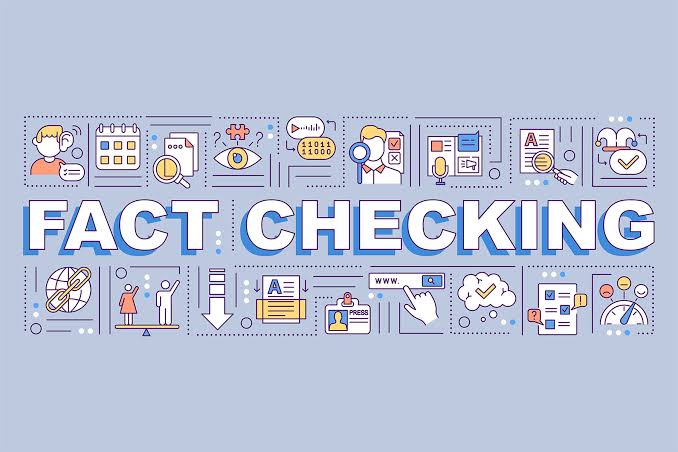|
Getting your Trinity Audio player ready...
|
Every day, unverified information spreads like wildfire across WhatsApp, Instagram, Facebook, TikTok and even in our neighbourhoods. Many Nigerians fall victim to viral posts that look convincing but are completely false, like fake giveaways or health misinformation.
The good news is that you don’t need a journalism degree to fight misinformation, and all that you need is curiosity, a little scepticism and access to the internet.
This guide will show you how to verify viral claims, identify red flags and stay informed using free tools and everyday methods.
Why This Matters
Misinformation can have real-world consequences. In the past few years alone, Nigeria has witnessed hoaxes that led to panic buying, vaccine scepticism and even violence. During the COVID-19 pandemic, false claims about the virus and cures went viral, despite warnings from the World Health Organization.
7 Ways to Fact-Check Without Being a Journalist
1. Pause Before You Share
Viral content is designed to shock, scare or excite you. Emotional reactions equal more shares. The first step in verification is not reacting. What you have to do is take a breath, read the entire message and ask yourself:
“Where is this coming from? What’s the goal of this message?”
2. Do a Quick Google Search
Take a portion of the claim and search it on Google. For example, if you see “FG to deposit ₦30,000 in all student accounts by Monday,” copy the phrase into Google.
If it’s real, reputable news outlets or official institutions will be reporting it. Avoid relying solely on blogs or gossip sites and trust credible outlets like Channels TV, Premium Times, NCDC, ROUNDCHECK and many more.
3. Examine the Source (Or Lack of One)
You need to ask questions like: Who is making this claim? Is it a verified handle? Is there a real person or organisation behind the post? Is the website URL suspicious (e.g., news24-now.biz)?
If you can’t find the author, platform or origin of the information, then that’s a red flag.
You can also use tools like WHOIS lookup to check who owns a domain and how long the site has existed.
4. Check For Evidence, Not Just Opinions
You have to know if the post or content contains specific names, dates, places, images or videos with context and official statements or links?.
If it sounds vague, like: “They said we should prepare for lockdown next week.”
That “they” is doing a lot of work, and you should ask the poster or creator of the content who exactly the ‘they’ is. Good journalism includes sources, quotes and links.
Misinformation often hides behind general statements.
5. Use Free Verification Tools
- Reverse Image Search: Upload the image to Google Images or TinEye to see where it came from.
- Video Verification: Use InVID to break down and trace videos.
- Link Checkers: Use ScamAdviser to evaluate suspicious websites.
These tools are beginner-friendly and expose when images or footage are recycled from old events.
6. Check Multiple Sources
If only one news outlet is talking about a shocking event, you most definitely have to take a pause. Reputable news won’t stay exclusive to one news outlet, so you should watch out. Misinformation thrives in echo chambers, where only one side is heard.
You can check and compare coverage from a Nigerian source like TheCable and an international one like BBC News Africa.
7. Ask Fact-Checkers or Submit to ROUNDCHECK
When in doubt, don’t stay silent. Fact-checking platforms like ROUNDCHECK, Dubawa, Africa Check, ICIR and many others allow you to submit suspicious posts for investigation.
Also, ROUNDCHECK’s volunteer network has worked on dozens of claims that started as WhatsApp forwards and has helped stop the spread of false information.
Bonus Tip: Screenshots Can Be Faked
Most people would think that once there are screenshots, evidence has been established, but it can be faked. Even blue ticks and government logos can be cloned using editing apps. If a screenshot seems too dramatic, check the original source instead of reposting it.
For example, don’t assume a tweet is real until you visit the actual Twitter profile.
In conclusion, you don’t need a press pass or media job to be part of the solution. Every time you stop a false story from spreading, you are protecting your community.
As media consumers, we all have a role to play. Verification isn’t just for journalists; it is for everyone with a smartphone.
Stay curious, cautious and informed.








